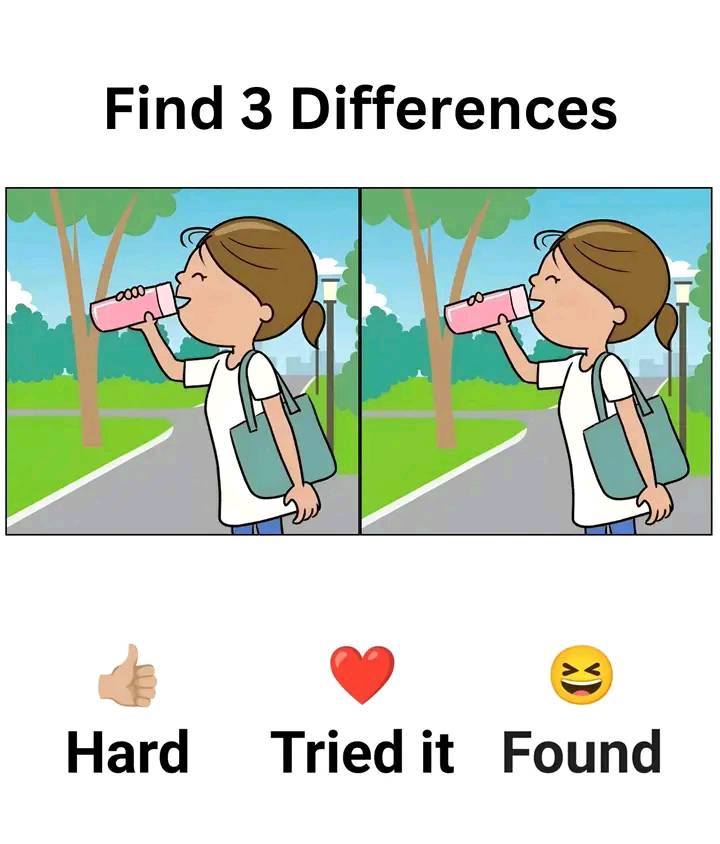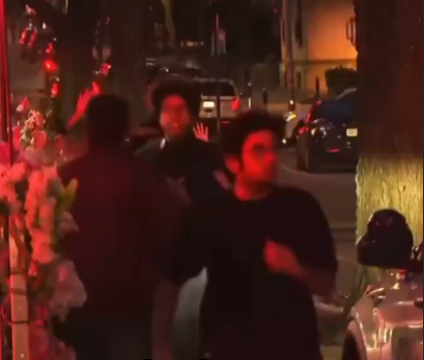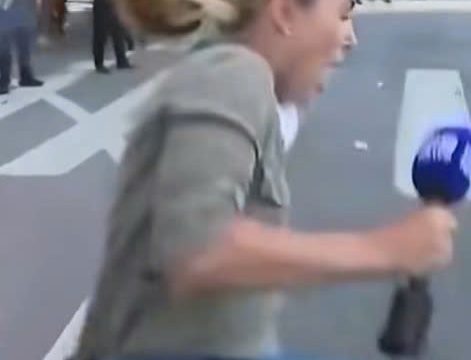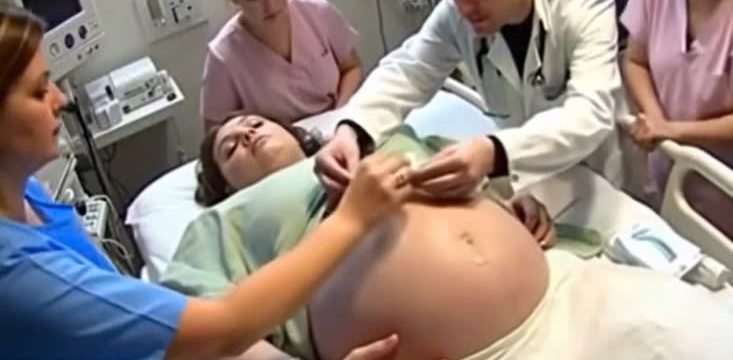Looking for a quick mental challenge that’s both fun and surprisingly beneficial for your brain? Try your hand at this classic “Find the 3 Differences” puzzle. At first glance, the two side-by-side images may look identical, but if you slow down and examine them closely, you’ll discover three subtle but clever differences that are easy to miss.

While this may seem like just a fun little game, visual puzzles like this actually offer more than entertainment—they help sharpen your focus, boost attention to detail, and strengthen logical thinking. What makes this type of puzzle so engaging is how deceptive it is. You’re presented with two images that appear to be exact copies of each other, and the challenge is to find tiny changes hidden within them. Our brains are wired to expect balance and symmetry, which means we often overlook what’s actually in front of us. We tend to process familiar scenes quickly, filling in missing parts automatically, especially when there’s a lot of visual information competing for our attention. That’s why you might find yourself staring at these pictures for longer than expected, searching for changes your brain keeps telling you aren’t there. If this puzzle stumped you at first, you’re not alone.
Many people make the same mistakes when trying to solve spot-the-difference challenges. One of the biggest ones is focusing only on the main subject—in this case, the girl holding the bottle—while completely ignoring the background. Another common misstep is rushing through the image without slowing down to examine each area with care. And finally, people tend to look for big, obvious changes, when the real challenge lies in spotting the smallest details, like a missing strap or an altered shape. So, let’s break down the three differences step-by-step. The first is on the pink water bottle the girl is holding. In the left image, there’s a straw sticking out of the top of the bottle, but in the right image, the straw is gone. It’s a small change that many people overlook because the brain expects the straw to be there and fills it in subconsciously.
The second difference is in the background. If you focus on the scenery behind the girl, you’ll notice that in the left image, there’s a round bush or tree popping up near the center-left of the horizon. But in the right image, that bush is missing, replaced by more open green space. This kind of detail is especially tricky to catch because it’s in the periphery of the image, an area your eyes might not immediately focus on. The third and most difficult change is on the girl’s bag. In the left image, the strap of her shoulder bag loops fully up to her shoulder.
But in the right image, the strap appears incomplete—it cuts off midway, making it look broken. Since our brains naturally complete shapes we’ve seen before, it’s easy to overlook this kind of subtle difference. What’s fascinating about puzzles like these is that they don’t just test your observation—they train it. By forcing you to slow down and notice what’s actually there instead of what you assume is there, these challenges can improve your visual memory and attention span. They also enhance your general awareness and help develop the kind of detail-oriented thinking that comes in handy in everyday life. Think of them as mini workouts for your brain—quick, effective, and oddly satisfying. After solving the puzzle, take a moment to reflect. How long did it take you to find all three differences? Was there one that stumped you more than the others? Try sharing this challenge with a friend or family member and see if they can spot the changes faster than you did. It’s a fun and harmless way to introduce a little friendly competition while giving everyone’s brain a boost. To recap, the three differences are: the missing straw on the water bottle, the missing bush in the background, and the incomplete strap on the girl’s bag. Simple changes, but cleverly hidden. These types of puzzles remind us that even the smallest details matter—and noticing them can be incredibly rewarding. So keep your eyes sharp, stay curious, and get ready for your next visual challenge. Let’s see if you can spot the differences even faster next time.





